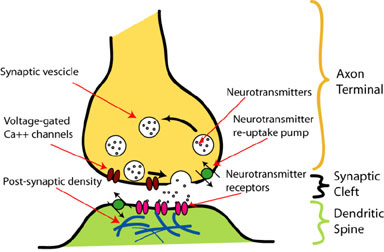Psychological Obstacles to Grief and the Grieving Process
We tend to talk about grief and the grieving process as if it were a separate category of emotional experience altogether, different somehow from all the others. Because it means confronting death, mortality and ultimate loss, the grieving process does have a uniquely large and pervasive impact on our psyches; from another point of view, however, grief is but one of the emotions and when it becomes unbearable, we will ward it off in our characteristic ways. In other words, when people go through the grieving process, you will often see them resort to their habitual defenses. As discussed in my post on the tenacity of defenses, as we grow up, our modes of warding off pain become entrenched; even when we've evolved and developed new ways of coping on a day-to-day basis, when confronted with a feeling as difficult to bear as grief, we may fall into the familiar rut of our oldest defenses.
We had to put our dog Maddy to sleep yesterday. While it's not quite the same as losing a human member of our family, she has been a beloved part of our lives for the last ten years. Her death has made me notice how we're all responding to our grief, reflective of our particular defenses, and in not such unusual ways, I believe. It has also stirred a lot of memories from 20 years ago when, within the space of a few months, my dear friend Tom Grant died of kidney cancer at the age of 45 and my mother-in-law Eva, then in her late 50s, succumbed to metastatic breast cancer. These untimely deaths -- Tom and his wife had two small children and my mother-in-law was fit, dynamic and vitally alive -- have been among the major losses in my life and on occasions such as Maddy's death, the feelings I had back then are still very much present to me.
Splitting and Projection
For the last year or so, Maddy has had a laryngeal problem common in older Labrador Retrievers; she was scheduled for corrective surgery on Monday. In the four or five days leading up to the surgery, her condition had deteriorated badly and she basically stopped eating. We thought it might have to do with her medications, but when we took her to the surgeon Monday morning, he immediately said, "This has nothing to do with her larynx problem." Her lungs were so full of fluid he couldn't even read her X-ray. He believed she had some fatal condition and presented euthanasia as an option, although he told us that congestive heart disease, a treatable condition, might also be to blame.
Maddy's loss of appetite had filled me with dread. Both my friend Tom and my mother-in-law lost their appetites as their conditions worsened; I felt sure Maddy had some form of cancer and I wanted to have her put to sleep that day -- to prevent further needless suffering, I told myself. The rest of the family felt otherwise and wanted to make sure of her condition first before taking such a step. I felt very rational and level-headed but kept my opinions to myself. This was my defense: in order to evade the pain of loss, I split it off and projected it into the rest my family for them to carry; I became a bit detached and efficient, as I am wont to do at such a moment. I'm good in crisis situations; my defenses help me put emotion aside and do what needs to be done, though in this case, it stopped me from feeling my own grief.
Continue "Psychological Obstacles to Grief and the Grieving Process"
